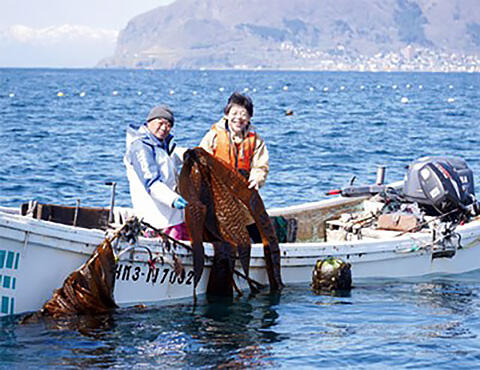Universities increase their brand power to improve social trust and attract high-caliber students. A university's brand power can be said to arise from many factors, including its founding philosophy, its long history, its researchers and research achievements, its students and graduates, and the attractiveness of its campus. However, a university's brand is symbolized by its name, abbreviations, symbolic emblems, logos, school colors, communication emblems, and characters. Traditionally, universities applied to trademark their names and emblems only defensively. Now, however, it is important to utilize brands strategically to increase the recognition of the university's name, for publicity, to commercialize research results, and support university-originated ventures. The revision of the Trademark Act is expected to enable universities to license their prominent trademarks to third parties and make the use of university brands a more active endeavor.
Significance of the revision of the Trademark Act
The Trademark Act stipulates that items such as famous names and marks held by universities may not be registered as trademarks (Article 4(1)(vi)), with the exception that a trademark may be registered only when the universities themselves apply for it (this is called a "public-interest famous trademark"; Article 4(2)). This prevents a third party unrelated to the university from monopolizing the famous emblems of a university in order to protect matters of public interest, such as respect for authority. Based on this intention, Article 30(1) and the proviso of Article 31(1) of the Trademark Act stipulate that universities are not allowed to grant exclusive or non-exclusive rights of use ("licenses" hereafter) even if the public-interest famous trademark rights were acquired by the universities themselves subject to Article 4(2) to prevent confusion regarding the source.
The above provisions of the Trademark Act were clear and considered unproblematic. This meant that the need for revision to the law was not discussed for many years. In reality, there was no need for a third party other than universities to acquire a university's famous emblem, and there was little apparent reason why third parties would use universities acquired public-interest famous trademarks. In practice, however, despite the restrictions on licensing trademark rights for famous emblems owned by universities (such as the official names and abbreviations of famous universities) as public-interest famous trademarks, universities independently allowed the use of such emblems in explanatory text, rather than in the form of trademark specification. Universities could also acquire trademark rights and issue licenses for symbols and characters that were not regarded as famous without being restricted by Article 4(1)(vi) and Article 4(2). Thus, the stipulations of the Trademark Act made the system difficult to understand due to issues such as the degree of prominence. An interesting survey published in 2013 indicated that some universities recognized the Trademark Act in their brand use while others did not.
However, the situation surrounding universities has changed markedly due to factors such as the declining birthrate and global competition. It has become extremely important to improve the brand power of public-interest famous trademarks acquired by universities through wide-ranging use of such trademarks as licenses to third parties in order to improve universities' name recognition, promote collaboration with local governments and companies, utilize the results of industry-university collaborations, and support university ventures. In addition, there is a growing sentiment that the provisions of the Trademark Act are not in line with the times, as the enhancement of name recognition and the brand power of many public interest groups other than universities are also important for publicizing an organization. As a result, the proviso of Article 31(1) of the Trademark Act was eliminated through a 2019 revision, and it became possible to formally grant non-exclusive rights to use public-interest famous trademarks owned by universities to third parties.
Expansion of trademark utilization in universities
Universities have traditionally focused on education and research. Trademarks and items such as university names, university abbreviations, symbolic emblems, and logos have almost always been used by universities and teachers in their daily activities, such as in papers, presentation materials, websites, business cards, and letterheads. Although such emblems were sometimes used in stationery and clothing sold at campus stores, their use was mostly limited to teachers and students.
However, the external strategic use of university trademarks is now an important part of improving the brand power of universities. To attract outstanding students and researchers, it is important to raise the brand value of the university by increasing its name recognition in collaboration with organizations outside the university. In addition, as industry-academia collaborations strengthen, an increasing number of companies are seeking to grant university trademarks to the products of joint research in order to improve market value. In recent years, the development of university ventures has become more active, and the licensing of university trademarks to university venture companies has helped increase the trust placed in venture companies and made it easier for them to raise funds.
As mentioned, universities are increasingly licensing university trademarks to external organizations. In a major change to university brand utilization strategy, revisions to the Trademark Act have enabled universities to officially license the prominent commercial emblems they have acquired to third parties.
Utilization of the Hokkaido University brand
Strengthening brand power is an important issue at Hokkaido University, and efforts are being made at various levels of the organization. Many universities hold press releases and open campuses to spread university information, and many share research results using websites. With the revision to the Trademark Act, universities have been able to license trademarks to third parties. Hokkaido University has started licensing university names and products resulting from joint research to companies.
Hokkaido University is also taking on the challenge of working with companies on a number of initiatives that will improve the university's unique brand power while making use of its assets. The following are some examples of this:
1. Hokkaido Clark's Milk
This project is aimed at the branding of milk from dairy cows raised on a farm on Sapporo Campus. Dairy cows on an in-school farm immediately near Sapporo Station are free to graze on the pasture in the summer, and they eat corn silage and hay in winter to yield milk, the flavor of which changes from season to season (see Photo 1). The raw milk itself is a product, but it is also processed into soft serve ice cream, ice cream, mozzarella cheese, cookies, baumkuchen, madeleines, canolas, rollcakes, and other products, and is offered under the brand name "Hokkaido Clark's Milk" in on-campus restaurants and at neighboring shops, and in breakfast meals at hotels. Baumkuchken and cookies have also been selected as returns for hometown tax donations in Sapporo City (known as 'Furusato Nouzei' in Japanese).

2. Hokkaido University Gagome
Gagome is a valuable kelp that can be collected only from the seashore south of Hakodate. The many years of study performed on it at the Faculty of Fisheries Sciences on the Hakodate campus has borne fruit, and it has attracted attention in recent years for its abundant sticky components, which are a characteristic of gagome kelp (see Photo 2). The Faculty of Fisheries Sciences has developed a unique marine cultivation technique and has succeeded in cultivating gagome kelp in which the fucoidan content is more than twice the natural value while the cultivation period is reduced to one-third. The gagome kelp cultivated through this technique is being branded as "Hokkaido University Gagome®". The university has collaborated with many companies to sell soap, cosmetics, candy, bread, and other gagome products.

3. Other examples
In addition, several companies have launched a number of products under the "Hokkaido University" brand. These include cider made with apples grown at the university's Yoichi orchard, "Oshoromaru Curry" in collaboration with the well-known company Gotoken (Hakodate), and the high-protein ice cream "Ushi kara moratta ice," developed jointly by the university's Nutrition Center and Sekoma (Sapporo), which operates Seiko Mart, a famous convenience store chain. What all of these products share is not simply the university trademark but also the university's primary approach to brand leveraging, which highlights the story behind the product's creation and the difficulty of the research behind it (see Photo 3).

Future Outlook
A university's decision to license trademarks, emblems, and marks related to public-interest trademarks to companies risks impairing the university brand due to the behavior of the licensee. When the university licenses its brand, the university must be responsible for it as well. However, it must always consider two questions, "Why is it necessary to carry a university trademark on this product?" and "How does this license contribute to the improvement of the university's brand power?", while also paying close attention to any possible misunderstanding among consumers. Therefore, checks are conducted up to the final packaging of the actual product, with continuous management as appropriate, such as checking how the public-interest famous trademark (as well as other trademarks and emblems) is used. In addition, since universities do not manufacture products themselves, it is also necessary to give sufficient consideration to corporate quality assurance responsibilities and product liability in contracts.
The Hokkaido University brand is an intangible asset accumulated over the 145-year history of the school's predecessors, originating with the 1876 Sapporo Agricultural School, and is a source of pride for teachers, students, and graduates. This is also true of corporate brands, but building a brand takes a long time, while its reputation can be lost in seconds. Keeping this in mind, the university believes that it should leverage its brand while firmly being mindful of the fact that it was entrusted to them by the school's pioneers.

Ikuo Terauchi
Institute for the Promotion of Business-Regional Collaboration, Hokkaido University




